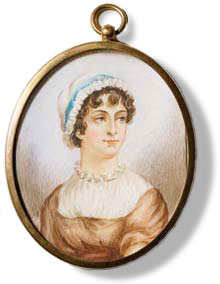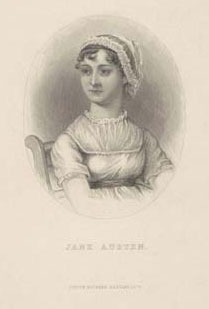Jane Austen Relived

The Morgan Library & Museum; AZ078
Photography by Schecter Lee, 2009.
The extraordinary life, work, and legacy of one of the greatest novelists in the English language, Jane Austen (1775–1817), are the focus of a new exhibition at The Morgan Library & Museum from November 6, 2009, through March 14, 2010. Offering a close-up portrait of the iconic British author, whose popularity has surged over the last two decades with numerous motion picture and television adaptations of her work, the show provides tangible intimacy with Austen through the presentation of more than 100 works, including her manuscripts, personal letters, and related materials, many of which the Morgan has not exhibited in over a quarter century.
A Woman’s Wit: Jane Austen’s Life and Legacy also includes first and early illustrated editions of Austen’s novels, as well as drawings and prints depicting people, places, and events of biographical significance. A highlight of the exhibition is a specially commissioned film by the noted Italian director Francesco Carrozzini, featuring interviews with artists and scholars such as Siri Hustvedt, Fran Lebowitz, Sandy Lerner, Colm Tóibín, Harriet Walter, and Cornel West.

London: Richard Bentley, 1870
Purchased by J. P. Morgan, Jr., 1925;
MA 1034.12
Photography by Schecter Lee, 2009.
“The greatness of Jane Austen’s writing is seen in her continuing popularity today,” said William M. Griswold, director of The Morgan Library & Museum. “Although she wrote about life and society in England two centuries ago, her witty, satirical approach to her subjects resonates with contemporary readers. The Morgan is fortunate to have such an outstanding collection of Austen material, and this exhibition provides a close, intimate look at the artist’s life and work.”
About Jane Austen
Jane Austen was born in 1775 into a rural middle-class family. Her father, George Austen, was the rector at Steventon, a small village in the southern English county of Hampshire. Her mother, Cassandra Austen, was a member of a prominent family. Austen’s immediate family included six brothers and one sister, also named Cassandra, who remained Jane’s closest friend and confidante throughout her life.
At an early age, the two sisters were sent to Oxford for schooling. Both girls, however, caught typhus and returned home. Two years later, they were once again sent away to school. At the age of eleven, Jane Austen finished her formal education and returned home. It was in this environment, encouraged by her family—all enthusiastic readers themselves—that she began to write poems, stories, and plays for her family’s as well as her own amusement.
As Austen grew into adulthood, she continued to work on her fiction while taking part in the everyday activities of young women of her time—she practiced the pianoforte, assisted in supervising servants, sewed, socialized frequently at dances and balls, traveled to visit family members, and detailed these activities in numerous witty and amusing letters, mostly to Cassandra. She continued to write short pieces and shared them with her family.
Most likely first composed in 1794–95, Austen’s first surviving novel, Lady Susan, about a wicked yet enchanting widow who is determined to find a husband at any cost for herself and her retiring daughter, was written as a series of letters. It was a longer and more sophisticated story than were her previous efforts. Lady Susan was never published during her lifetime; it was not until 1811 that her first major novel, Sense and Sensibility, was printed. This was followed by Pride and Prejudice (initially entitled First Impressions; 1813), Mansfield Park (1814), Emma (1815), and the posthumous Northanger Abbey and Persuasion (1817).
In 1816 Austen became ill but continued writing. She died in 1817, at the age of 41.







